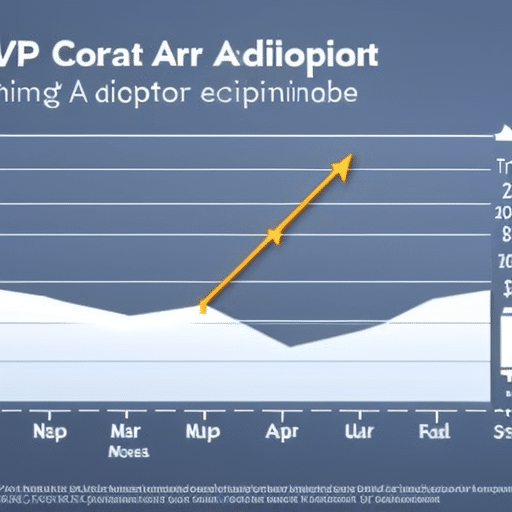Xrp’s Value Proposition Beyond Price
XRP is a digital asset designed to enable fast, secure, and low-cost payments. Created by Ripple Labs Inc., XRP has quickly become one of the most popular cryptocurrencies on the market due its value proposition beyond price. This article will explore the history and development of XRP, its advantages over other cryptocurrencies, and how it can be used as a payment method. Additionally, this article will compare XRP to Bitcoin before concluding with a discussion about how to invest in XRP and what the future holds for this cryptocurrency.
Overview of XRP
XRP is a digital asset created by Ripple Labs, Inc., with a market capitalization of over $10 billion as of March 2021. It is the native currency that powers the RippleNet payments network, facilitating seamless and low-cost international payments. XRP has achieved success in the crypto markets due to its ability to leverage network effects and liquidity pools for rapid settlement times and improved cost efficiency. By utilizing these features, XRP can achieve faster transaction times than traditional payment networks, making it an attractive option for financial institutions looking to reduce costs associated with cross-border money transfers. As such, XRP’s value proposition lies in its ability to provide faster and more cost-effective payments than traditional methods. This makes it an appealing asset for investors looking to capitalize on its potential for long-term gains or short-term profits from price fluctuations. With this in mind, it is clear that XRP has a strong value proposition beyond just its current price level. Moving forward, understanding the history and development of this digital asset will be essential in determining its future prospects.
History and Development
Ripple Labs Inc. was founded in 2012 and has been responsible for the development and maintenance of XRP, a digital asset created to facilitate cross-border payments and other financial transactions. Ripple’s origin can be traced back to 2004 when Ryan Fugger envisioned creating a decentralized monetary system which would allow individuals to create their own money. Since then, adoption rates of XRP have surged due to its fast transaction speeds, low transaction fees, and scalability. Some of its major partners include MoneyGram, American Express, Santander Bank, Western Union, and more. These partnerships have helped propel XRP as one of the leading digital assets in the world today. The success of XRP is further evidenced by its market capitalization which has grown from $0.006 USD per coin in 2013 to over $ 0.60 USD per coin today – representing an impressive 9800% increase in value over the last 7 years!
The history and development of XRP demonstrate that it has evolved into a powerful digital asset with many potential use cases beyond just being used as a payment method. Its versatility makes it an attractive option for investors looking for alternative investments outside traditional markets such as stocks or bonds. With continued innovation from Ripple Labs Inc., there is potential for even greater adoption rates across different industries in the future.
XRP as a Payment Method
XRP is a cryptocurrency designed to enable fast and cost-efficient cross-border transactions. Its primary benefit lies in its ability to move money quickly across international borders with minute transaction costs, compared to traditional banking systems. Transactions occur almost instantly, enabling users to transfer money from one country to another within seconds at a fraction of the cost of traditional methods. Consequently, XRP is now being adopted as an increasingly popular payment method for international payments.
Cross-Border Transaction Benefits
A major benefit of utilizing XRP for cross-border transactions is its speed, which has been ironically dubbed ‘lightning’ by savvy users. International payments are often time consuming and expensive due to the need for liquidity solutions when converting different currencies. XRP’s technology eliminates this issue with a distributed ledger that allows for real-time settlement of payments without having to convert between multiple currencies. This means that transaction fees associated with middlemen and currency conversion can be avoided, resulting in significant cost savings over traditional payment methods, as well as quicker processing times. As such, XRP provides an ideal platform for executing global payments quickly and cost efficiently. Furthermore, the instantaneous nature of these transfers could lead to increased trust between parties involved in international financial transactions.
Speed and Cost Efficiency
The instantaneous settlement of payments enabled by the distributed ledger technology employed in XRP eliminates intermediaries, resulting in faster and more cost-efficient transactions compared to traditional payment methods. This is especially true when it comes to liquidity pooling, atomic swaps, and smart contracts. By removing the need for third-party verification, XRP enables near-instantaneous settlements with fees that are much lower than other payment providers. Additionally, XRP can be used as a source of liquidity for global payments since it can be exchanged for any currency or asset without an intermediary. This makes it ideal for facilitating international payments quickly and cost effectively. With these advantages over traditional payment methods, XRP offers a compelling value proposition beyond price.
XRP as a Digital Asset
Hovering above the tumult of markets, XRP stands as a steadfast digital asset. As a decentralized exchange, it offers users with interoperability solutions that allow for quick access to liquidity and low-cost transactions. It is also well equipped with innovative features such as simple programming tools and distributed ledger technologies that enable fast and secure payments. This enables it to provide many advantages over other cryptocurrencies such as Bitcoin and Ethereum, including faster transaction times, lower costs, and greater scalability. XRP’s ability to act as an efficient medium of exchange has made it an attractive choice for various financial institutions looking to take advantage of its advanced features. Its capacity to facilitate low-cost payments makes it ideal for cross-border remittance or payment processing services. In this way, XRP has greatly improved the efficiency of global financial systems making money transfers easier and more cost effective than ever before. With these benefits in mind, XRP is set up for continued success as a digital asset in the years ahead.
XRP’s advantages over other cryptocurrencies make it an attractive proposition for both users and developers alike. By offering faster transaction speeds at lower costs when compared to traditional banking networks, XRP can be used by individuals or businesses looking to save money on transaction fees or streamline their operations with cross-border payments or remittances. Additionally, its decentralized nature allows developers to make use of open source code which further adds flexibility when creating new applications on top of its blockchain network. This has resulted in numerous applications being built around the platform ranging from gaming dApps that use smart contracts technology all the way up through enterprise solutions deployed by large banks or financial institutions. Allowing customers access to fast and secure payments while reducing overhead costs associated with international transactions makes XRP a powerful tool in today’s rapidly evolving digital economy – one that has much potential beyond just its current price movements in the market.?
Advantages Over Other Cryptocurrencies
XRP, being a cryptocurrency asset, has numerous advantages over other digital assets that should be considered. Firstly, XRP is significantly more scalable than its competitors due to its consensus-based ledger validations which can process up to 1,500 transactions per second. Additionally, the fees associated with XRP are notably lower than those of other cryptocurrencies; this makes it an attractive option for users who require quick and cheap transfers. Finally, XRP also offers advanced transaction security due to its cryptographic signature protocol that verifies each transaction before it is added to the blockchain. These features make XRP a desirable choice in comparison to other digital assets.
Scalability and Low Fees
Ripple’s XRP cryptocurrency is renowned for its scalability and low fees, allowing for quick and cost-effective transactions. Transactions using XRP are settled in real-time, making it easier for different parties to move funds quickly without being subject to delays. Furthermore, the cost of such transactions is significantly lower compared to other cryptocurrencies since a single transaction costs only a fraction of a penny. This makes it an attractive option for businesses that require fast and affordable transfer of funds across borders or within large organizations. Additionally, XRP provides advanced security features which make sure that all transactions are safely recorded on the distributed ledger technology. As such, Ripple’s XRP stands out as one of the most efficient cryptocurrencies when it comes to scalability and low fees.
The advanced transaction security provided by Ripple also helps protect users from any fraudulent activities or malicious attacks, ensuring greater trustworthiness between parties involved in transactions. With all these advantages combined, Ripple’s XRP has become an attractive proposition for both retail customers as well as corporate entities looking to make international payments with ease and confidence. Consequently, this has led to increased demand for XRP tokens due to its superior scalability and low fee structure compared to other cryptocurrencies on the market today. Moving forward, Ripple’s XRP is expected to remain a leader in terms of providing efficient solutions for digital payments across the globe.
Advanced Transaction Security
Inherent in Ripple’s XRP cryptocurrency is advanced transaction security, protecting users from fraudulent activities or malicious attacks with a sense of reliability. Secure protocols and ledger solutions are employed to ensure transactions are performed safely and securely on the XRP blockchain:
- The network utilizes digital signatures to authenticate each transaction, which prevents unauthorized access or tampering with the ledger.
- Hashed timelock contracts (HTLCs) are also used to provide additional security for transactions that require trust between two parties.
- An adaptive consensus algorithm provides rapid block confirmations while maintaining a high level of security by preventing double-spending attacks.
This advanced transaction security makes XRP an ideal platform for secure financial transactions, providing users with peace of mind that their funds are safe and sound on the blockchain. By leveraging these secure protocols and ledger solutions, XRP has become one of the most reliable cryptocurrencies available today, setting itself apart from other digital assets in terms of trustworthiness and safety. Moving forward, it is clear that this impressive set of features will only continue to benefit the Ripple community as it grows into the future.
XRP Ledger
The XRP Ledger offers a secure, fast, and cost-effective means of exchanging value with immediacy and finality. The XRP Ledger is an open-source distributed ledger that provides an innovative approach to digital payments. It utilizes the Interledger Protocol (ILP) for secure communication between different payment networks while also enabling smart contracts on its platform. This allows users to make real-time cross-border payments with minimal fees, reducing settlement times compared to traditional methods. Furthermore, the use of cryptographic hash functions in the protocol ensures a high level of security against unauthorized access or malicious actors. Additionally, all transactions are publicly visible on the network’s blockchain allowing for complete transparency and traceability. These features make it attractive for commercial applications such as remittance payments or e-commerce transactions. Ultimately, this makes it easier for people around the world to send money quickly and securely without having to worry about costly middlemen or time delays associated with traditional banking systems. As a result, XRP’s growing popularity has led to an increase in its value proposition beyond price.
XRP’s Growing Popularity
XRP has experienced a surge in popularity due to its ability to facilitate secure and cost-efficient real-time cross-border payments. This has resulted in mass adoption of XRP, as well as increased community interest:
-
Mass Adoption: XRP is now one of the most widely used digital assets, with many companies using it for their international payment systems. Additionally, numerous financial institutions have adopted XRP into their services, allowing customers to use it for various types of transactions.
-
Community Interest: The growing demand for XRP has led to an increase in public engagement around its technology and potential use cases. The Ripple community continues to grow as more people are drawn towards the project’s ambitious goals and innovative solutions. With the development of new products and partnerships, there is a great deal of excitement surrounding the asset’s future prospects.
The increasing popularity of XRP signifies that its value proposition goes beyond price alone – offering users access to fast, efficient global payments. As such, its potential use cases warrant further exploration.
Potential Use Cases
As XRP continues to gain traction, its potential for use in various applications is becoming increasingly apparent. One of the key uses of XRP is in affiliate marketing. This involves a company or individual creating referrals for another company, and being paid for those services. With XRP, these payments can be quickly and securely sent globally, allowing companies to engage in more efficient forms of marketing while saving costs related to international transactions fees.
XRP’s growing popularity has also made it an attractive option for merchants looking to accept digital currency as a form of payment from customers. This opens up new opportunities for businesses that may not have previously considered accepting cryptocurrency as a payment option due to the complexity of setting up merchant accounts with traditional banking systems. By using XRP, businesses are able to reduce their transaction fees and offer customers a secure and convenient way to pay without having to rely on third-party processors such as PayPal or Stripe. With this increased merchant adoption, there is great potential for greater mainstream acceptance of digital currencies like XRP going forward. As such, understanding the regulatory environment surrounding cryptocurrencies is paramount in order ensure stability and growth going forward.
Regulatory Environment
Given its rapidly growing popularity, it is essential to explore the regulatory environment surrounding XRP in order to ensure stability and longevity for the digital currency. The adoption of XRP has been accompanied by increased government oversight and enforcement of regulations to protect investors from potential risks. It is important for cryptocurrency exchanges, traders, and other related businesses to comply with existing laws and regulations related to anti-money laundering (AML) and know your customer (KYC). This allows organizations within the industry to operate in a more compliant manner while preserving the core benefits of XRP.
At the same time, there are potential challenges associated with this kind of governmental oversight. For example, some governments may be more restrictive when it comes to regulating digital currencies than others, leading to different levels of compliance across jurisdictions. Moreover, XRP could potentially face additional scrutiny given its close association with Ripple Labs Inc., which has already come under fire from U.S. regulators over allegations that its token sales constituted an unregistered security offering. Despite these potential challenges, ensuring regulatory compliance can help promote stability and trust in XRP as a secure investment opportunity going forward – transitioning into the risks of investing in XRP.
Risks of Investing in XRP
Investing in XRP carries a range of risks that must be carefully considered. These include an accurate risk assessment of the underlying technology, liquidity analysis of the coin, potential for regulatory changes, and global market conditions.
When making any investment decision, it is important to consider all potential risks associated with a particular asset. With regards to XRP, investors must assess the overall quality of its underlying technology before investing in it. This includes examining the coin’s transaction speed and scalability as well as its security protocols. Additionally, investors should conduct an extensive liquidity analysis of XRP to ensure that they can easily convert their investment into fiat currency or other cryptocurrencies if needed. Furthermore, due to the volatile nature of cryptocurrency markets and the fact that many countries have not yet established clear regulations relating to digital assets, potential investors should also take note of how new regulations may impact their investments in XRP. Finally, investors should always keep an eye on global market conditions which could affect demand for XRP or any other cryptocurrency in unpredictable ways. Having said this, transitioning into a discussion about ‘XRP’s price performance‘ will provide further insight into whether or not investing in XRP may be a sound financial decision for potential investors.
XRP’s Price Performance
XRP has experienced significant levels of volatility since its launch in 2012, with the coin’s value rising and falling at unpredictable intervals. For example, between 2017 and 2018, XRP prices surged from 0.2 cents to an all-time high of 3.84 USD in January 2018. This rapid increase was spurred by increased demand for cryptocurrency exchanges, as well as market trends that favored XRP over Bitcoin and other digital coins during this period. Subsequently, the price of XRP fell sharply after its peak, dropping back to 0.30 USD by mid 2019 before recovering slightly to just under 0.50 USD at present time. These wide fluctuations are indicative of a volatile market that may be difficult for investors to predict or anticipate accurately. As such, it is important for potential investors to consider both the risks and benefits associated with investing in XRP before making any decisions about their investments in this cryptocurrency. With this understanding of the current performance of XRP in mind, it is possible to make a better assessment when comparing it with Bitcoin and other digital currencies on the market today.
Comparing XRP to Bitcoin
Comparing XRP to Bitcoin, one may notice that the two cryptocurrencies have different characteristics which may influence a potential investor’s decision. In terms of network scalability, XRP has been said to be able to process 1,500 transactions per second in comparison to Bitcoin’s seven transactions per second. Moreover, when it comes to transaction speed, XRP can settle payments in just four seconds while Bitcoin takes up to an hour for the same task. These differences are essential and could serve as key factors for investors who prioritize speed and scalability over other features. With these considerations in mind, understanding how to invest in XRP is important for investors who may want to take advantage of its distinct characteristics.
How to Invest in XRP
When deciding to invest in XRP, it is essential to understand the various strategies available and how best to apply them. One of the most common investment strategies for XRP is through purchasing tokens on a crypto exchange. Crypto exchanges offer investors access to the cryptocurrency market and allow them to purchase XRP using fiat currency or other cryptocurrencies like Bitcoin. It is important for investors to research different exchanges in order to find one that offers competitive rates and a secure platform. Additionally, investors should be aware of any fees associated with each transaction when buying or selling XRP. With a comprehensive understanding of these investment strategies, investors can make an informed decision on how best to proceed with their investments in XRP. As such, transitioning into the future prospects of this digital asset becomes easier and less risky.
XRP and the Future
Analyzing the potential of XRP in the future reveals its capacity to revolutionize the digital asset industry. The cryptocurrency, XRP, has many advantages that could potentially benefit investors and users alike. These include:
- Ability to process transactions quickly and cheaply: XRP is able to process payments faster than other cryptocurrencies thanks to its consensus-based approach, which allows it to settle transactions within seconds for a fraction of a penny compared to traditional payment methods.
- Ability to facilitate smart contracts and decentralized applications (DApps): XRP provides developers with an easy-to-use platform which enables them to create sophisticated smart contracts and DApps with minimal effort. This could drastically reduce their development costs as well as increase their application’s scalability.
- High liquidity: Given that XRP is one of the most traded assets in the world, it has high liquidity on many exchanges making it attractive for both short term speculators as well as long term investors.
- Low cost of entry: Due to its low price per token compared to other top-tier assets, XRP can be acquired by anyone at a low cost making it accessible for people with limited capital who are looking for an entry into the digital asset industry.
All these factors combined make XRP an attractive investment option in terms of both short term profits as well as long term growth potentials given its ability to disrupt industries such as banking and finance through its innovative technology and use cases.





 Bitcoin
Bitcoin  Ethereum
Ethereum  Tether
Tether  XRP
XRP  Solana
Solana  USDC
USDC  TRON
TRON  Dogecoin
Dogecoin  Lido Staked Ether
Lido Staked Ether  Cardano
Cardano  Wrapped Bitcoin
Wrapped Bitcoin  Hyperliquid
Hyperliquid  Wrapped stETH
Wrapped stETH  Bitcoin Cash
Bitcoin Cash  Sui
Sui  Chainlink
Chainlink  LEO Token
LEO Token  Stellar
Stellar  Avalanche
Avalanche  USDS
USDS  Toncoin
Toncoin  Shiba Inu
Shiba Inu  WhiteBIT Coin
WhiteBIT Coin  WETH
WETH  Litecoin
Litecoin  Wrapped eETH
Wrapped eETH  Binance Bridged USDT (BNB Smart Chain)
Binance Bridged USDT (BNB Smart Chain)  Hedera
Hedera  Monero
Monero  Bitget Token
Bitget Token  Ethena USDe
Ethena USDe  Polkadot
Polkadot  Coinbase Wrapped BTC
Coinbase Wrapped BTC  Uniswap
Uniswap  Pi Network
Pi Network  Pepe
Pepe  Aave
Aave  Dai
Dai  Ethena Staked USDe
Ethena Staked USDe  Aptos
Aptos  OKB
OKB  Bittensor
Bittensor  BlackRock USD Institutional Digital Liquidity Fund
BlackRock USD Institutional Digital Liquidity Fund  Jito Staked SOL
Jito Staked SOL  NEAR Protocol
NEAR Protocol  Internet Computer
Internet Computer  Cronos
Cronos  Ethereum Classic
Ethereum Classic  sUSDS
sUSDS